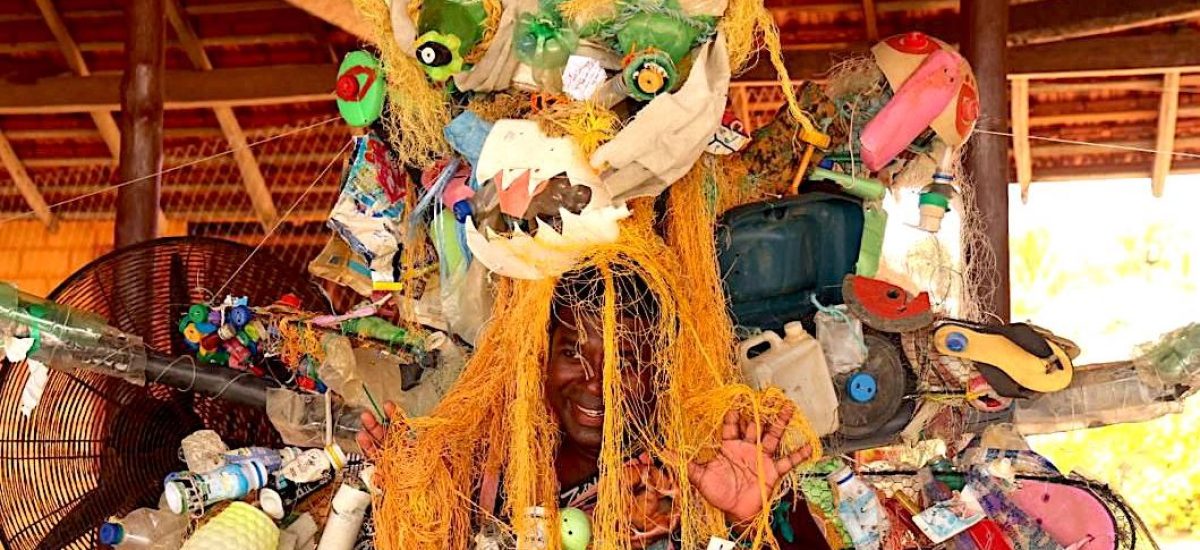Photo by Mia Abeyawardene
Nestled on the picturesque shores of Kalpitiya, the Burning Donkey Festival stands as a testament to creativity, sustainability and community spirit. The festival was launched in 2019 by a group of passionate friends, initially known as the Wild Collective. Their idea emerged from a desire to blend artistic expression with environmental awareness, creating a platform that resonates with both locals and visitors alike. This year, the second edition of the festival took place under the name Burning Donkey, an ode to Kalpitiya’s native donkeys and the burning issues in Sri Lanka and worldwide.
According to organizer Dilsiri Welikala, the festival’s inception was rooted in a shared vision among its founders, who recognised the need for a holistic approach to festivities – one that goes beyond mere entertainment. They wanted to create an event that not only provided a space for artistic expression but also educated participants about the critical environmental challenges facing Sri Lanka. With a focus on the local context, the festival emphasised the importance of preserving natural resources and fostering sustainable practices.
Kalpitiya itself is an idyllic setting, known for its lagoon, stunning beaches, rich biodiversity and a popular destination for kite surfers. However, the region faces significant challenges, particularly concerning waste management and pollution. The Burning Donkey Festival shone a light on these issues, encouraging participants to engage in discussions about environmental conservation and collective responsibility. By integrating art with activism, the festival inspired a sense of urgency and action among participants.
One of the festival’s standout features was its commitment to sustainability. Organizers sought to minimise waste, opting for eco-friendly materials and practices wherever possible. From encouraging participants to bring reusable containers to providing workshops on upcycling and eco-art, the festival embodied a proactive approach to environmental stewardship. This commitment resonated deeply with the community, fostering a sense of ownership and pride in both the festivities and the surrounding environment.
The festival garnered attention for its diverse programming, which included art installations, music performances, workshops and discussions. Local and international artists came together to showcase their talents, creating a dynamic and engaging atmosphere. The emphasis on collaboration enriched the festival experience as artists from various disciplines shared their perspectives and creative processes. Featured panel discussions included The State of Our Oceans by Ruvin De Silva and Martijn Piek, who engaged audiences to reflect on their relationship with the ocean and how they could better protect it.
A highlight of the festival was its focus on youth engagement. Recognising that the future of environmental sustainability rested with the younger generation, organizers made a concerted effort to involve local schools and youth groups in the festivities. Educational activities, including a puppet workshop on the critically endangered Bandula Barb, encouraged young people to explore their creativity while fostering a deeper understanding of environmental issues. Workshops led by local artisans and environmental advocates provided practical skills and knowledge, equipping participants to take meaningful action in their own lives.
One of the festival’s most captivating elements was the Plastic Monster, an artistic installation that served as a stark reminder of the impact of plastic pollution on marine life. Created by local artists this giant structure, made entirely from discarded plastic waste, drew attention to the urgent need to address plastic pollution in coastal communities. The installation encouraged viewers to reflect on their consumption habits and the broader implications of waste on the environment. In Dilsiri’s short film The Monster, he described what it was like to wear the Plastic Monster creation as a costume: “When you wear it and you realise all this debris around, you with the nets, everything is getting caught on you. I was thinking about the animals, the turtles and the fish that I would see on my beach and how they struggle and they have this excruciating slow death.”
As the festival unfolded, it became evident that it was more than just a celebration; it was a movement that sought to foster a culture of sustainability, encouraging participants to rethink their relationship with the environment. From engaging art pieces, including a local youth photography competition focused on climate related issues, the festival created a space for dialogue and reflection, prompting participants to consider their role in shaping a sustainable future.
Burning Donkey’s success was a testament to the power of community. Local businesses, artists and residents came together to support the event, showcasing the strength of collaboration and shared purpose. This sense of unity was palpable throughout the festival, as participants celebrated not only the arts but also the rich cultural heritage of Kalpitiya.
The festival is committed to leaving a lasting impact beyond its annual celebration. Organizers are actively involved in ongoing community initiatives, working to address environmental issues and promote sustainable practices year round. This dedication to lasting change reinforces the festival’s mission to inspire individuals to take action in their own communities.
As the festival continues to grow and evolve, it promises to inspire future generations to take action for a more sustainable and vibrant world. The Burning Donkey Festival is not just an event; it is a movement that empowers individuals to become stewards of the environment, fostering a collective commitment to protect the planet for future generations.

